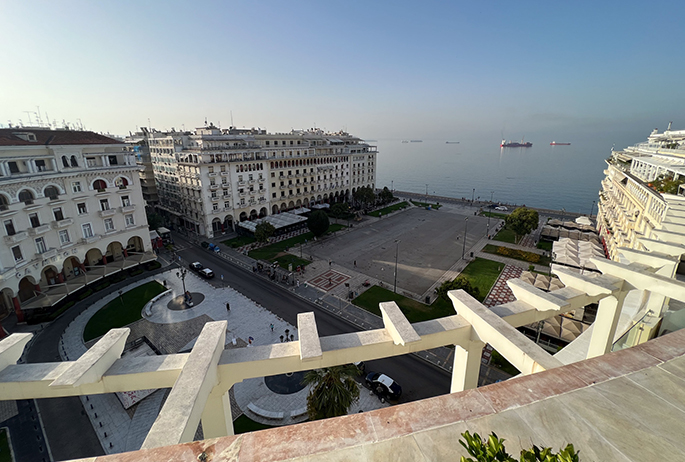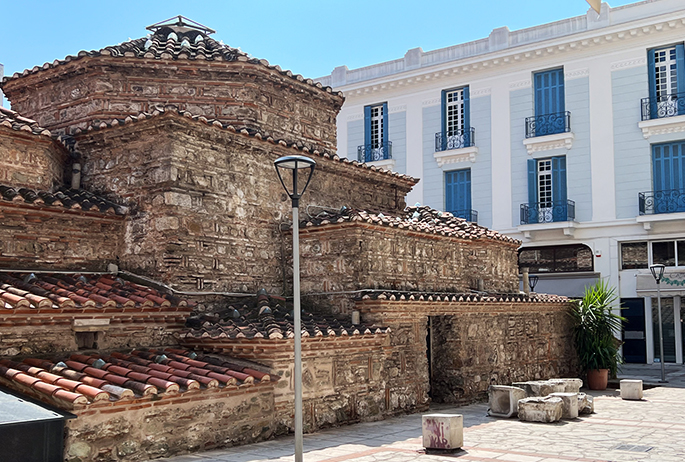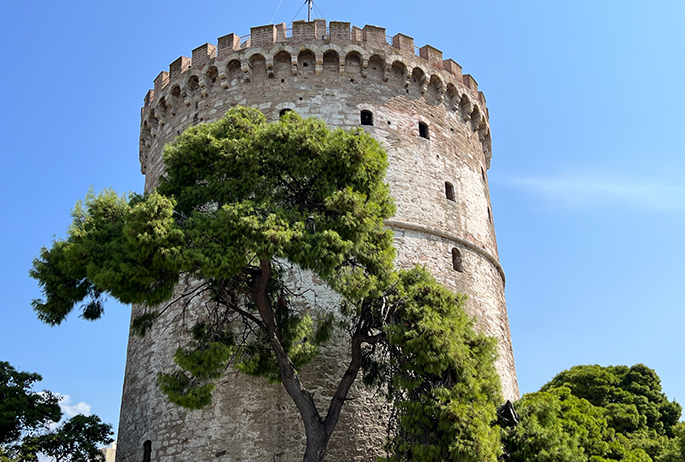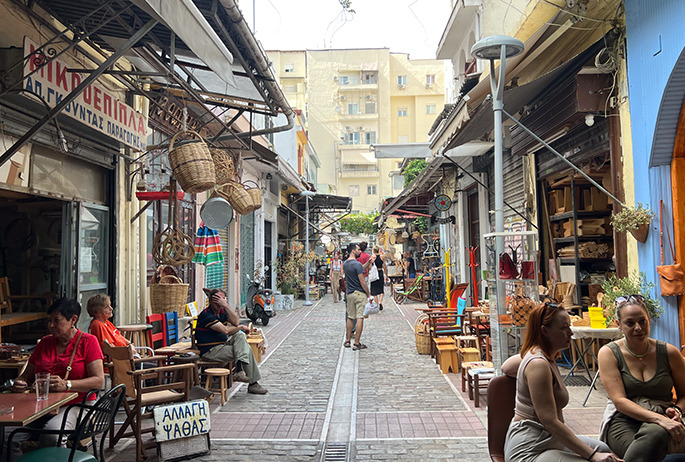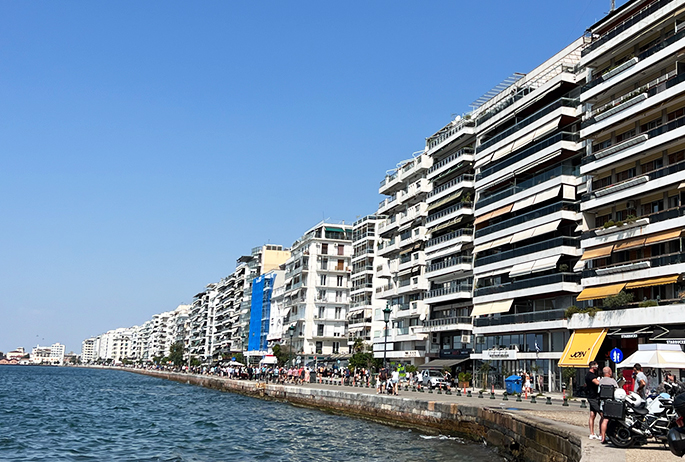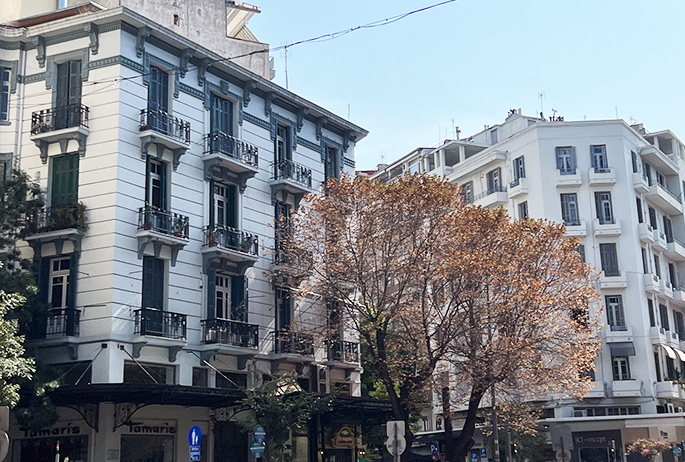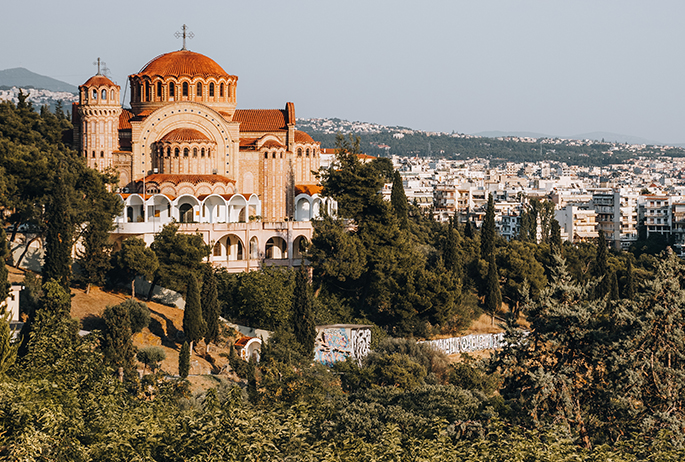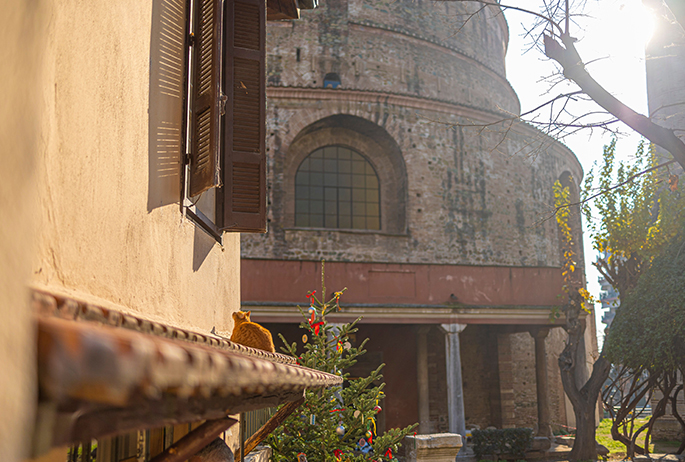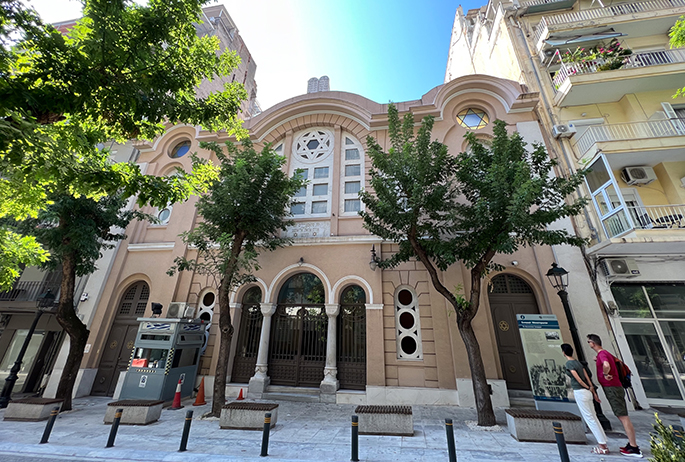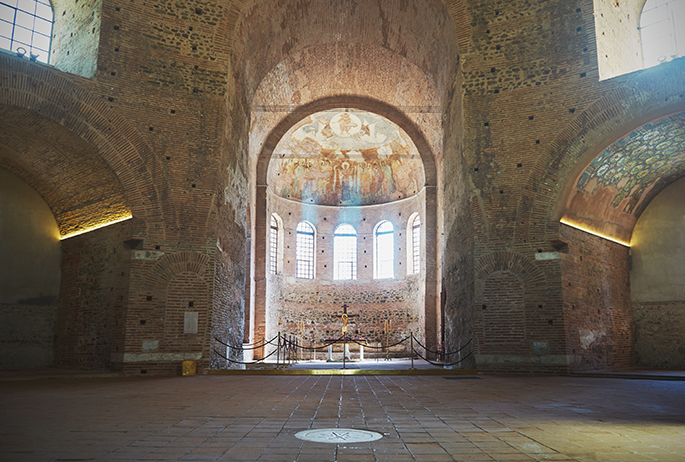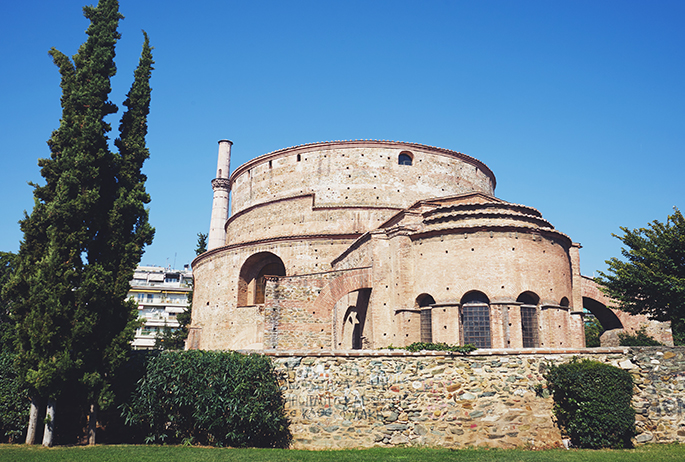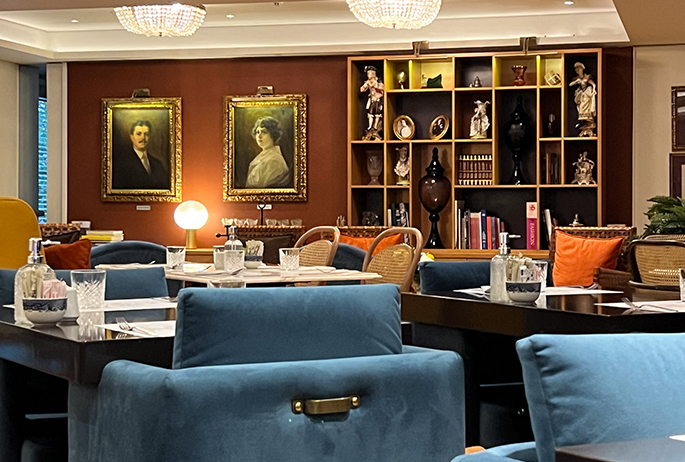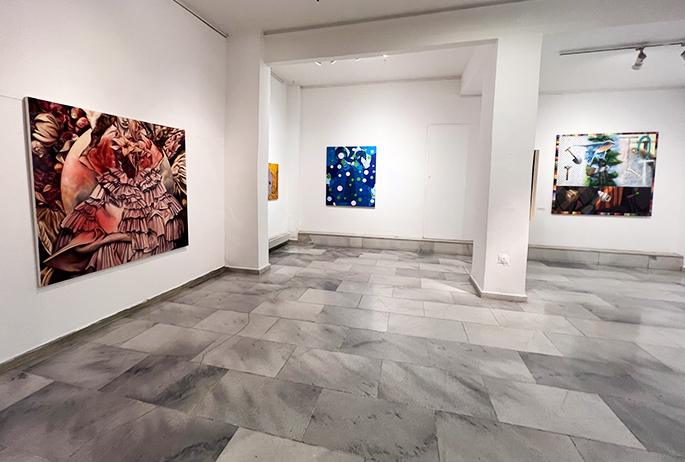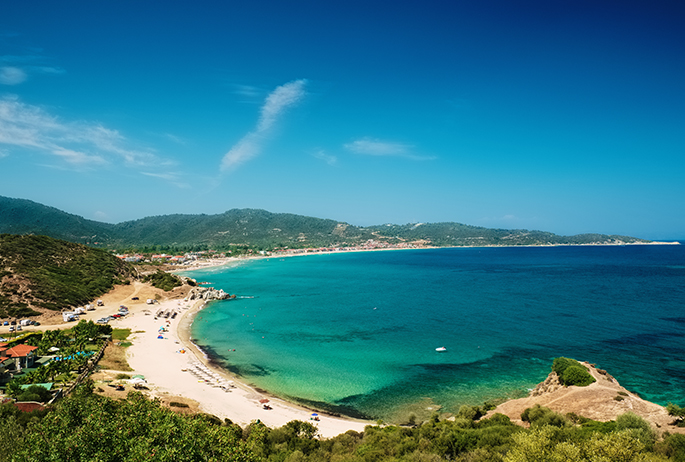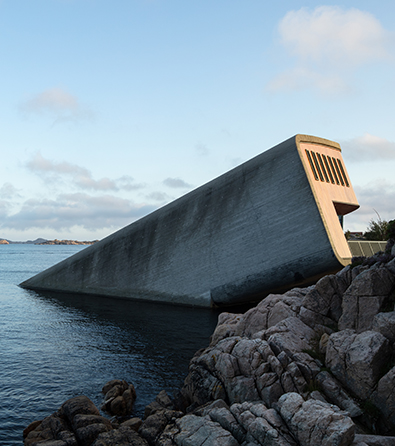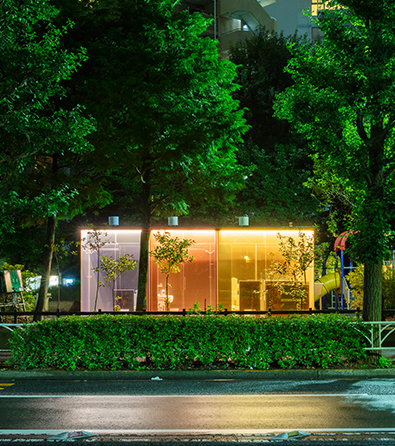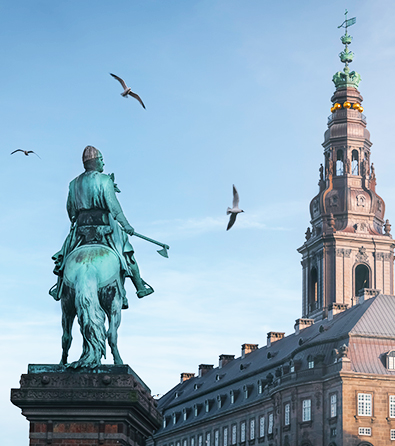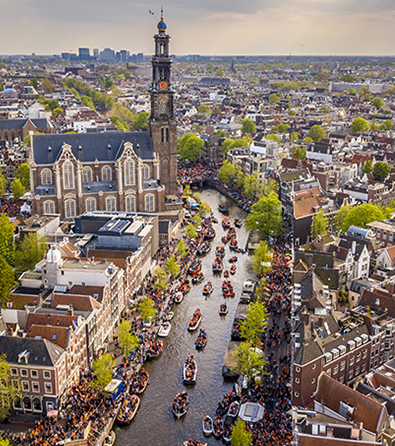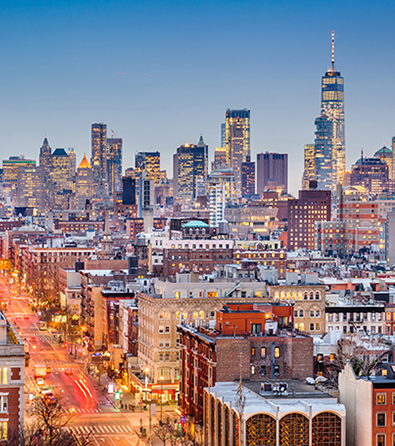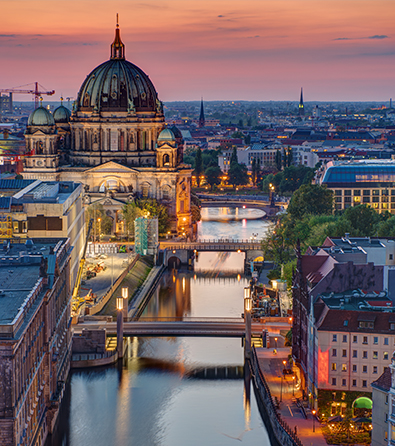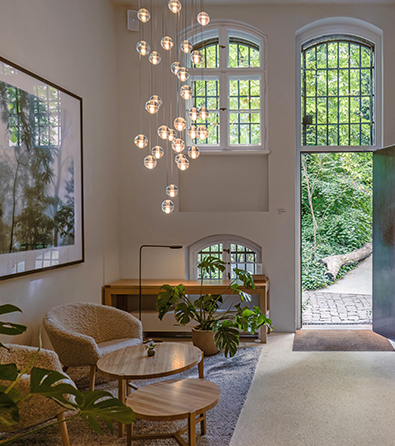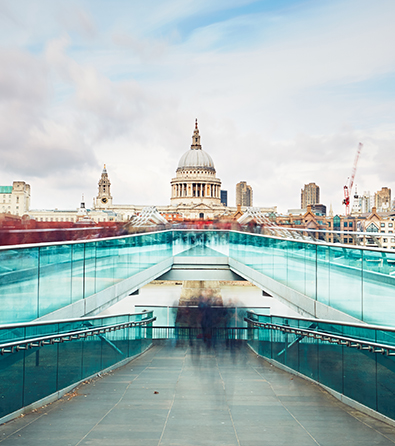Thessaloniki is a dynamic crossroads of history and creativity, where Byzantine monuments, Ottoman relics, and a contemporary arts scene converge. Discover world-class museums, from the Archaeological Museum and Museum of Byzantine Culture to groundbreaking venues under the MOMus network network, including modern art, photography, and experimental spaces. Alongside galleries, architectural marvels like the White Tower and street art corridors enrich this cultural capital of northern Greece.
To access our exclusive Thessaloniki Treasure Map, simply click the attached link and become a Culture Treasures member. The map pins every place in this guide and adds bonus cafés, boutiques and cultural venues. Planning your stay? Our recommendations for the best hotels in Thessaloniki are featured at the end of this guide. Explore our curated urban travel essentials and long flight essentials for a comfortable journey.
Thessaloniki has a story as deep as the blue Aegean Sea. There’s an old tale that after Thessalonike died, she became a mermaid in the Aegean Sea, asking sailors about her legendary brother, Alexander the Great. The city grew significantly under Roman rule and became an important place for trade and culture. You can see signs of its rich past everywhere, from old churches to markets set up by the Ottomans. Among the many legends tied to the city is the story of the god Dionysus. It is believed that Dionysus, the god of wine, merriment, and agriculture, was particularly fond of the region because of its fertile land, making it a prime location for vineyards and festivities. Today, every corner of Thessaloniki tells a story of its ancient heroes and past times.
Contemporary Art Venues:
MOMus (Thessaloniki / Multiple Locations)
Why go: A cornerstone of Thessaloniki’s contemporary art scene, unifying major visual arts institutions under one dynamic umbrella.
Tip: Visit MOMus Contemporary for cutting-edge exhibitions, then explore MOMus Photography and MOMus Modern near the waterfront for a broader cultural experience.
Established in 2018, MOMus, the Metropolitan Organisation of Museums of Visual Arts of Thessaloniki, brought together several prominent institutions under a single, forward-thinking initiative. It merges the former State Museum of Contemporary Art, the Macedonian Museum of Contemporary Art, and the Thessaloniki Museum of Photography, among others, into a unified structure aimed at promoting visual culture. Each branch maintains its own character while contributing to a shared mission of accessibility and innovation in the arts. MOMus Contemporary, located in the city’s Helexpo fairgrounds, continues to present influential solo and group exhibitions, often spotlighting international voices alongside Greek artists. With a wide-ranging program that spans visual arts, photography, and design, MOMus plays a vital role in positioning Thessaloniki as a leading cultural capital in Southeastern Europe.
Bensousan Han (Thessaloniki / Ano Ladadika)
Why go: A rare surviving example of 19th-century han architecture, now reimagined as a multidisciplinary cultural hub.
Tip: Check the venue’s social media channels before visiting, as programming is currently paused pending funding support.
The Bensousan Han is the oldest surviving caravanserai (han) in Thessaloniki and an evocative example of the city’s layered urban history. Built in phases beginning around 1810 by Samuel Bensousan, a Sephardic Jewish man, the han originally served dual functions typical of Ottoman-era inns: horses were kept on the ground floor, while travelers rented beds, often shared, in the communal upper-floor lodgings. In the 1930s, the property changed hands and was repurposed for commercial use, hosting shops, offices, and storage units. After briefly functioning as a customs office in the 1970s, the building stood abandoned for nearly three decades. In 2007, it was rediscovered by Thessaloniki’s artistic community and revitalized as a space for exhibitions, performances, and educational initiatives. While the center is currently closed due to funding challenges, its unique architecture and historical significance make it a compelling site in the city’s cultural landscape.
Teloglion Fine Arts Foundation (Thessaloniki / University District)
Why go: A modern cultural institution housing one of the most significant collections of Greek art from the 19th and 20th centuries.
Tip: Visit the foundation’s website to check current exhibitions and events, as the programming changes frequently.
Founded in 1972 through the generous donation of Nestor and Aliki Telloglou, the Teloglion Fine Arts Foundation forms part of the Aristotle University of Thessaloniki and is located at its northern edge. The Telloglous gifted their extensive art collection and resources to the university with the goal of promoting arts education and cultural exchange. Today, the foundation’s holdings include thousands of works, with a strong focus on modern and contemporary Greek art, alongside pieces from European and Asian traditions. Over time, the collection has grown thanks to additional donations from collectors and artists. Designed as a multi-purpose space, the foundation hosts exhibitions, lectures, performances, and scholarly events, serving as a bridge between academic inquiry and artistic practice. Its contemporary architectural design and open interior spaces provide an ideal environment for large-scale exhibitions and cultural gatherings.
Kalfayan Galleries (Thessaloniki / City Center)
Why go: A key institution bridging East and West in the contemporary art world, with a focus on Greece, the Balkans, and the MENAM region.
Tip: Check their parallel programming in Athens, Kalfayan operates spaces in both cities and often features different exhibitions simultaneously.
Founded in 1995, Kalfayan Galleries has become one of the most influential forces in Greece’s contemporary art scene, with branches in both Thessaloniki and Athens. The gallery is known for fostering dialogue between Eastern and Western visual cultures, with a strong emphasis on showcasing artists from Greece, Southeastern Europe, and the MENAM (Middle East, North Africa, and Mediterranean) region. Over the years, Kalfayan has gained international recognition through its curated programs, institutional collaborations, and consistent participation in major art fairs. While the gallery champions emerging voices, it also has a notable curatorial history focused on post-war and contemporary Greek art. The Thessaloniki space continues to present thought-provoking exhibitions and is integral to the city’s evolving art landscape.
Municipal Art Gallery of Thessaloniki (Thessaloniki / Vasilissis Olgas Avenue)
Why go: A rich collection of modern Greek art housed in an elegant early 20th-century villa designed by Xenophon Paionidis.
Tip: After visiting the main gallery, explore its two satellite venues, Yeni Tzami and Alatza Imaret, for additional rotating exhibitions in unique historical spaces.
Founded in 1966 as part of the Municipal Library and established as an independent institution in 1986, the Municipal Art Gallery of Thessaloniki is one of the city’s key cultural institutions. Its main location, “Villa Mordoch,” is a beautiful example of eclectic early 20th-century architecture, designed in 1905 by prominent architect Xenophon Paionidis. The gallery’s collection includes over 1,000 works of art, with a strong emphasis on modern Greek painting, engraving, and sculpture. It also hosts significant temporary exhibitions featuring both Greek and international artists, along with historical research shows examining the evolution of Greek art. Beyond exhibitions, the gallery actively engages in documentation and research, organizing symposiums, workshops, and conferences. Two additional venues, Yeni Tzami and Alatza Imaret, expand the gallery’s reach within the city center and offer an enriching continuation of its curatorial vision.
Zina Athanassiadou Gallery (Thessaloniki / City Center)
Why go: One of Thessaloniki’s most established contemporary art galleries, known for promoting both emerging and renowned artists from Greece and abroad.
Tip: Check the gallery’s schedule in advance, its curated exhibitions are thoughtfully paced and often coincide with major art events in the city.
Established in 1983 by its namesake founder, Zina Athanassiadou Gallery has become a leading institution in Thessaloniki’s contemporary art scene. Situated in the heart of the city, the gallery has played a crucial role in shaping the cultural landscape through its consistent support for modern visual art. Its programming includes both Greek and international artists, spanning a variety of media and practices, from painting and sculpture to installation and conceptual art. Over the decades, the gallery has actively participated in major art fairs and biennials, enhancing its reputation both locally and internationally. With a commitment to fostering dialogue and innovation in the arts, the gallery remains a vital space for collectors, curators, and art lovers seeking a curated perspective on contemporary creativity.
Artis Causa (Thessaloniki / City Center)
Why go: A vibrant contemporary art gallery that lives up to its name, “for the sake of art”, by hosting thought-provoking exhibitions across diverse media.
Tip: Follow the gallery’s social channels for updates on artist talks and workshops, which often accompany exhibitions and offer deeper engagement.
Artis Causa is a dynamic platform in Thessaloniki’s contemporary art scene, dedicated to the exploration of bold and boundary-pushing visual expression. True to its Latin name, meaning “for the sake of art,” the gallery curates exhibitions that challenge artistic norms while fostering critical conversation and aesthetic discovery. It showcases a diverse roster of both emerging and established artists working across painting, sculpture, video, installations, and multimedia formats. In addition to exhibitions, Artis Causa plays an active cultural role by organizing artist talks, workshops, and community events that encourage dialogue between creators and audiences. With its experimental spirit and community-driven ethos, the gallery has become a magnet for art lovers seeking fresh perspectives within Thessaloniki’s evolving creative landscape.
Donopoulos International Fine Arts (Thessaloniki / City Center)
Why go: A leading gallery that bridges Greece’s local art scene with the global contemporary market through curated international exhibitions.
Tip: Check the gallery’s schedule during major art events in Thessaloniki, as it frequently aligns new exhibitions with cultural festivals and biennales.
Founded with the mission of connecting the Greek art world with broader international currents, Donopoulos International Fine Arts has established itself as one of Thessaloniki’s most prestigious galleries. The space curates thought-provoking exhibitions featuring both established and emerging artists from Greece and abroad, offering a platform for cross-cultural artistic dialogue. Over the years, the gallery has earned a strong reputation among collectors and curators for its refined selection and commitment to quality. With its international orientation and sophisticated programming, Donopoulos International Fine Arts continues to shape Thessaloniki’s presence on the contemporary art map.
Art and Design Events:
Thessaloniki Biennale of Contemporary Art (Citywide)
Why go: A leading art event that transforms Thessaloniki into a global platform for contemporary artistic dialogue. Usually during September to December (biennial event, every two years)
Tip: Check the official website or local cultural calendars for the specific edition’s dates and venues, as the Biennale rotates locations and themes each cycle.
Established in 2007, the Thessaloniki Biennale of Contemporary Art highlights the city’s significance in the international contemporary art scene. Organized by MOMus – the Metropolitan Organisation of Museums of Visual Arts of Thessaloniki – the Biennale brings together artists, curators, and audiences from around the world to explore social, political, and artistic issues through innovative exhibitions and programs. Events are hosted across multiple venues including museums, heritage sites, and urban spaces, offering visitors a city-wide immersion into art. Each edition explores a different curatorial theme, showcasing a diverse range of media, from installations and video works to performance and conceptual art. The Biennale has become a cultural landmark, reinforcing Thessaloniki’s role as a Mediterranean hub of contemporary creativity.
Thessaloniki Design Week (Citywide)
Why go: A multidisciplinary design event that explores innovation, sustainability, and creativity across fields ranging from graphic design to gastronomy. Usually during the month of June (biennial event).
Tip: Events take place at various cultural institutions, galleries, and public spaces across the city, check local listings or social media for the most up-to-date schedule and locations during the event year.
Launched in 2019 by the nonprofit organization Philartia in collaboration with the Municipality of Thessaloniki, Thessaloniki Design Week (ThessDW) is a biennial celebration of design’s role in shaping contemporary life. The event brings together creatives, entrepreneurs, and the public through a wide-ranging program that includes exhibitions, lectures, workshops, guided tours, design competitions, and business networking sessions. With a focus on both emerging and established designers, ThessDW promotes dialogue around product design, graphic design, industrial and interior design, sustainable innovation, gastronomy, and technology. The event’s city-wide scope and inclusive approach have positioned Thessaloniki as a growing center for design thinking in the Mediterranean region, spotlighting how design intersects with economic, social, and cultural transformation.
Landmarks:
The White Tower (Thessaloniki Waterfront)
Why go: The city’s most iconic monument and a gateway to understanding Thessaloniki’s complex history.
Tip: Climb to the top for panoramic views of the city and the Thermaic Gulf, early morning and sunset are especially striking.
Standing proudly on Thessaloniki’s waterfront, the White Tower is an enduring symbol of the city. Originally constructed in the 15th century during the Ottoman era, the tower’s exact origins remain somewhat mysterious. It was built as part of the city’s defensive fortifications, replacing an older Byzantine structure, and served various roles throughout its history, including as a fortress, prison, and site of executions. Due to its grim function, it was once known as the “Tower of Blood” (Kanlı Kule). In 1890, as part of efforts to rebrand its image, the structure was whitewashed, giving rise to its current name.
Today, the White Tower houses a museum operated by the Ephorate of Antiquities of Thessaloniki, offering a comprehensive overview of the city’s development from antiquity through the Byzantine and Ottoman periods to modern times. Through thematic exhibitions, visitors can explore Thessaloniki’s multicultural past, urban evolution, and vibrant cultural identity. The spiral ascent through the tower culminates in a viewing platform with breathtaking views of the sea, harbor, and cityscape, making it not just a historical site, but a sensory experience.
Rotunda of Galerius (Thessaloniki / City Center)
Why go: One of the oldest standing monuments in Thessaloniki, showcasing layers of Roman, Byzantine, and Ottoman history.
Tip: Look closely at the restored mosaics inside, some of the earliest examples of Christian art in Greece.
Built in the early 4th century AD by the Roman Emperor Galerius, the Rotunda is among the most architecturally impressive and historically layered sites in Thessaloniki. Originally intended as Galerius’ mausoleum and possibly part of his palace complex, the emperor was ultimately buried elsewhere (in modern-day Serbia). The monumental cylindrical structure, crowned by a soaring 30-meter-high dome, has survived centuries of transformation. In the late Roman and Byzantine periods, it was converted into a Christian church, making it one of the oldest surviving Christian monuments in the world.
During Ottoman rule, the Rotunda was repurposed as a mosque, and the addition of a minaret (still standing today) underscores its multicultural legacy. Inside, visitors can admire well-preserved mosaics that adorn the dome and walls, depictions of angels and sacred Christian iconography that reflect early Byzantine artistry and spiritual symbolism. Now recognized as a UNESCO World Heritage Site, the Rotunda operates as a museum and cultural venue, offering a powerful testament to the city’s layered past and religious history.
Jewish Heritage Sites (Thessaloniki / City Center)
Why go: Explore over 2,000 years of Jewish history in Thessaloniki, once home to one of the most influential Sephardic communities in the world.
Tip: Begin your visit at the Jewish Museum of Thessaloniki and continue to the nearby Monastir Synagogue for a deeper understanding of this rich heritage.
Thessaloniki holds one of the most significant and enduring Jewish legacies in Europe, dating back more than two millennia. At its peak in the early 20th century, the city was known as the “Jerusalem of the Balkans,” with Jews, primarily of Sephardic descent, making up a large portion of the population. The community thrived in culture, commerce, and intellectual life, contributing immensely to the city’s multicultural identity. Tragically, during World War II, the Nazis deported the majority of Thessaloniki’s 50,000 Jews to extermination camps, primarily Auschwitz-Birkenau. Fewer than 2,000 survived, marking a devastating loss that forever changed the city’s social and cultural fabric.
Today, this heritage is preserved through several landmarks. The Jewish Museum of Thessaloniki, housed in a restored 1904 building, documents the history and resilience of this once-flourishing community through photographs, artifacts, and personal stories. A short walk away, the Monastir Synagogue, built in 1927 by Jews from Monastir (Bitola, now in North Macedonia), stands as one of the few synagogues in Thessaloniki that survived the Holocaust. Though used primarily for ceremonial purposes today, it remains an active place of remembrance. Together, these sites offer visitors a moving and essential insight into Thessaloniki’s layered Jewish past.
Church of Saint Paul (Thessaloniki / Kedrinos Hill)
Why go: A modern yet spiritually significant site commemorating the Apostle Paul’s journey and his role in spreading Christianity to Thessaloniki.
Tip: Visit the nearby “Holy Spring of Apostle Paul,” a pilgrimage site believed to mark the place where Paul drank water while fleeing the city.
Perched on a hill in northeastern Thessaloniki with sweeping views of the city and the Thermaic Gulf, the Church of Saint Paul (Ιερός Ναός Αγίου Παύλου) honors the memory of the Apostle Paul’s missionary visit to the city in the 1st century CE. According to Christian tradition, Paul preached to Thessalonian inhabitants and later escaped the city via Kedrinos Hill, stopping at a spring which later became a sacred pilgrimage site known as the “Holy Spring of Apostle Paul.”
The current church was built in stages. A small chapel was first erected in 1922 following the liberation of Thessaloniki from Ottoman rule. As the local population grew and demand for a larger religious space increased, a new, more expansive church was constructed in the 1970s and consecrated in 1997. The architecture reflects a blend of contemporary and Byzantine influences, with a flat dome, decorative arches, and vivid iconography. Though relatively new, the church has quickly become a significant landmark in Thessaloniki’s religious landscape, especially for pilgrims tracing the footsteps of the Apostle Paul.
And Beyond:
Aristotelous Square (Thessaloniki / City Center)
Why go: Thessaloniki’s grandest public square, a neoclassical architectural gem and the city’s social heartbeat, offering iconic sea views and vibrant urban energy.
Tip: For the best panoramic view, visit the rooftop restaurant at the Electra Palace Hotel overlooking the square and the Thermaic Gulf.
Aristotelous Square is Thessaloniki’s central civic space and one of the most recognizable urban landmarks in Greece. Designed by French architect Ernest Hébrard in 1918 after the Great Fire of Thessaloniki, the square was intended to bring a sense of grandeur and symmetry to the city’s reconstruction, inspired by European neoclassical and Beaux-Arts urban ideals. Flanked by elegant arcades, colonnades, and palm-lined walkways, the square stretches from Egnatia Street to the waterfront, offering a sweeping visual axis toward the Aegean Sea.
Named after the ancient Greek philosopher Aristotle, who was born in nearby Stagira, the square embodies a blend of cultural reverence and modern-day leisure. Locals and visitors gather here throughout the day, making it an ideal location for people-watching, meeting friends, or enjoying a coffee at one of the many surrounding cafés. The square also hosts major public events, parades, and open-air concerts. For a truly memorable experience, head to the rooftop terrace of the Electra Palace Hotel, where you can dine or sip a drink while taking in the stunning views over the square, the sea, and the city skyline.
Athonos Square (Thessaloniki / City Center)
Why go: A lively pedestrian square offering a sensory-rich experience of Thessaloniki’s traditional markets, tavernas, and artisanal shops.
Tip: Visit in the late afternoon to enjoy both the vibrant daytime market and the cozy, music-filled tavernas that come alive after sunset.
Tucked between Aristotelous and Agia Sofia streets in Thessaloniki’s bustling city center, Athonos Square is a charming enclave that blends the atmosphere of a traditional Greek village with the energy of urban life. By day, it functions as a colorful market, where locals and visitors can browse stalls laden with herbs, spices, dried teas, fresh produce, cheeses, and fish. Traditional cafés line the square, serving strong Greek coffee and offering shaded spots to people-watch or take in the aroma of roasting nuts and herbs.
The surrounding alleys are home to small workshops, including carpentry studios and shoemakers, preserving the artisanal character that defined Thessaloniki’s commercial life for centuries. As evening falls, the square transforms into a culinary destination: tavernas spill out into the pedestrian lanes, tables are filled with mezze and grilled dishes, and the sound of traditional Greek music fills the air. Whether you’re looking to sample local flavors, shop for regional delicacies, or simply enjoy a warm and authentic atmosphere, Athonos Square offers a quintessential Thessaloniki experience.
Ano Poli – Upper Town (Thessaloniki / Old City)
Why go: Thessaloniki’s most historic district, offering a rare glimpse into the city’s Byzantine, Ottoman, and early Christian heritage amidst cobblestone streets and panoramic views.
Tip: Wear comfortable shoes, exploring Ano Poli involves steep climbs, but the view from the Byzantine walls or Heptapyrgion fortress is worth the effort.
Ano Poli, meaning “Upper Town,” is the only part of Thessaloniki that survived the Great Fire of 1917, preserving its centuries-old layout and architectural diversity. Nestled on the slopes above the modern city, this atmospheric district features winding alleys, traditional houses with wooden balconies, and a blend of Byzantine and Ottoman architecture. The area is home to some of Thessaloniki’s most significant religious landmarks, including the 5th-century Church of Osios David, known for its stunning early Christian mosaics, and the fortified 14th-century Vlatadon Monastery, still active today and recognized as a UNESCO World Heritage Site.
One of the most striking features of Ano Poli is the Heptapyrgion (Eptapyrgio) fortress, which has served as both a Byzantine stronghold and, in later centuries, an infamous prison until the late 1980s. Visitors can also enjoy traditional tavernas tucked into the hillside, serving local dishes in a peaceful, village-like setting. From the top of the ancient city walls, expansive views open up across Thessaloniki’s rooftops and the Thermaic Gulf, offering a powerful sense of the city’s layered history and its evolving identity.
Chalkidiki Beaches (near Thessaloniki)
Why go: Just an hour from Thessaloniki, Chalkidiki offers some of Greece’s most breathtaking beaches, making it the perfect summer escape from the city.
Tip: Rent a car to explore all three peninsulas, Kassandra, Sithonia, and Athos, for a variety of landscapes, from lively beach bars to secluded coves.
If you’re visiting Thessaloniki in the summer, it’s highly recommended to set aside a few days to explore the sun-drenched coastlines of nearby Chalkidiki. This peninsula region, located about an hour’s drive from the city, is renowned for its pristine beaches, clear turquoise waters, and scenic natural beauty. Chalkidiki is divided into three distinctive “legs”: Kassandra, known for its vibrant beach resorts and nightlife; Sithonia, offering quieter, unspoiled beaches surrounded by pine forests and hidden coves; and Mount Athos, a monastic republic that is off-limits to most visitors but whose nearby beaches are equally picturesque.
Chalkidiki caters to every kind of traveler, whether you’re looking to relax on sun loungers, explore charming seaside villages, or dive into water sports. Its proximity to Thessaloniki makes it an ideal destination for a quick getaway, creating the perfect contrast between urban culture and coastal serenity. From family-friendly shores to romantic hideaways, the beaches of Chalkidiki provide an unforgettable addition to any Northern Greece itinerary.
Mount Olympus (80 km southwest of Thessaloniki)
Why go: Greece’s tallest and most legendary mountain offers an awe-inspiring mix of mythological significance, alpine beauty, and rich biodiversity.
Tip: For the full experience, base yourself in the nearby town of Litochoro and take the Enipeas Gorge trail toward Prionia before summiting Mytikas.
Rising to a majestic 2,917 meters (9,570 feet), Mount Olympus is the highest mountain in Greece and a natural icon deeply rooted in ancient mythology. Located about 80 kilometers southwest of Thessaloniki, between the regions of Thessaly and Macedonia, it was believed by the ancient Greeks to be the home of the twelve Olympian gods. Today, it forms the heart of Greece’s first national park, established in 1938, and is recognized as a UNESCO World Biosphere Reserve due to its unique ecosystems and remarkable biodiversity.
Mount Olympus attracts hikers, nature lovers, and mythology enthusiasts alike. The most popular ascent begins from Litochoro, a picturesque town nestled at the mountain’s base. Trails lead through lush forests, dramatic ravines, and alpine meadows, culminating in panoramic views from Mytikas, the summit. The climb requires moderate to advanced hiking experience, but there are also easier routes and visitor centers for those who prefer a scenic day trip.
A visit to Mount Olympus offers not only a physical adventure but also a journey into the mythic past, where nature and legend converge in breathtaking harmony, just a short drive from Thessaloniki’s urban energy.
With the interactive map below, you can compare all available accommodation options in the city and find the best prices from a variety of leading providers.
